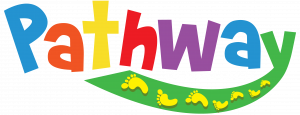Restless leg syndrome in children is surprisingly common, but is frequently missed. If your child is fidgety or has leg pain around bedtime and problems settling down, it’s worth considering this condition.
Sleep doctors get restless leg syndrome too
When I was a kid, my parents used to avoid giving me Coca-Cola after lunch. Not because they were overly concerned about my health. (If they had been, my mom wouldn’t have given me milkshakes when I watched Kung Fu Theater every Sunday afternoon. But that is a different story). The reason was that I would have really severe problems falling asleep about a quarter of the time. I would feel like I had “too much energy” in my legs and I would be unable to get comfortable. It was not painful, exactly, and it would go away if I got up to go to the bathroom, but come back again when I laid down again. I had one episode in college resulting in an entirely sleepless night and actually gave up caffeine for eight years, until my third year of medical school.
Fast forward to the library at Harvard in 2010 where I was reviewing for my sleep medicine boards, where I read that children with restless leg syndrome (RLS– also known as Willis-Ekbom Disease)) may complain of “too much energy in their legs”. I realized that I have had intermittent episodes of restless leg since childhood. Obviously, I had heard of the diagnosis before, and even diagnosed patients with it, but I had never heard that description before.
How common is restless leg syndrome in children?
RLS is a surprisingly common disorder in children, although it is difficult to estimate how common it is. About two percent of kids may suffer from it, with about 0.5-1% having severe symptoms. Many adult RLS suffers report that they suffered from growing pains in childhood.
What is restless leg syndrome, exactly? How is it diagnosed?
RLS in children and adults is characterized by leg discomfort which keeps the sufferer from falling asleep. It is usually worse at night and always improves with movement.
Kids need to describe their symptoms in their own words. Some common descriptions include:
- “Too much energy” in his/her legs
- Feeling like legs are tingly or “wiggly”
- Complaining that feet feel hot or cold
Other symptoms including kicking when trying to fall asleep.
The criteria for making the diagnosis are similar to the adult criteria which are summarized at the International Restless Leg Study Group website. A child needs to describe the symptoms in their own words, and, ideally, a close relative with RLS to make the diagnosis. Let’s see how a few children describe these symptoms. (These images are all courtesy of the RLS Foundation, specifically Georgi Bell. You can view them with several other great illustrations here.)
How do you diagnosis and treat restless leg syndrome in children?
RLS is by its very nature a subjective sensation. There is no test for the disorder. A careful history and physical examination by a physician is usually all that is necessary.
- Although further diagnostic testing may not be necessary, a serum iron test, specifically ferritin is important as iron therapy to increase the levels of ferritin over 50 μg/L (or sometimes even 75) may resolve or improve symptoms.
- An overnight sleep study is not necessary for the diagnosis. It may, however, show the presence of periodic limb movements of sleep(PLMS), which are rhythmic leg twitches which occur commonly in RLS and may disrupt sleep.
- RLS may be more common in children with attention deficit hyperactivity disorder.
- It is critical to enforce appropriate sleep hygiene and age appropriate bedtimes in children with RLS to ensure an age appropriate amount of sleep.
- Treatment for children with more severe sleep disruption frequently includes medication, especially if iron therapy is not effective. In most children I prefer starting with melatonin, clonidine or gabapentin. Other medications which may be used include lorazepam, clonazepam, ropinirole, or pramipexole. Equally important is avoidance of caffeine or medications such as selective serotonin reuptake inhibitors which may worsen this disorder.
Clearly, the assessment and management of this disorder is complex and should be made by a physician experienced in caring for kids with sleep problems.
For pediatricians and interested parents, here are some links, some of which may lead to articles behind paywalls:
- A good review article about RLS and PLMS and children.
- A very nice article with more great drawings of affected children by Dr. Daniel Picchietti is here.
- Also please check out the information at the RLS Foundation as noted above.
Special thanks to Dr. Picchietti (the real leader in the study of this disease in children) and Georgi Bell.
Who I am

I direct the Yale Pediatric Sleep Center. I’m also a parent, and I’m passionate about helping you get a better night of sleep. More.
